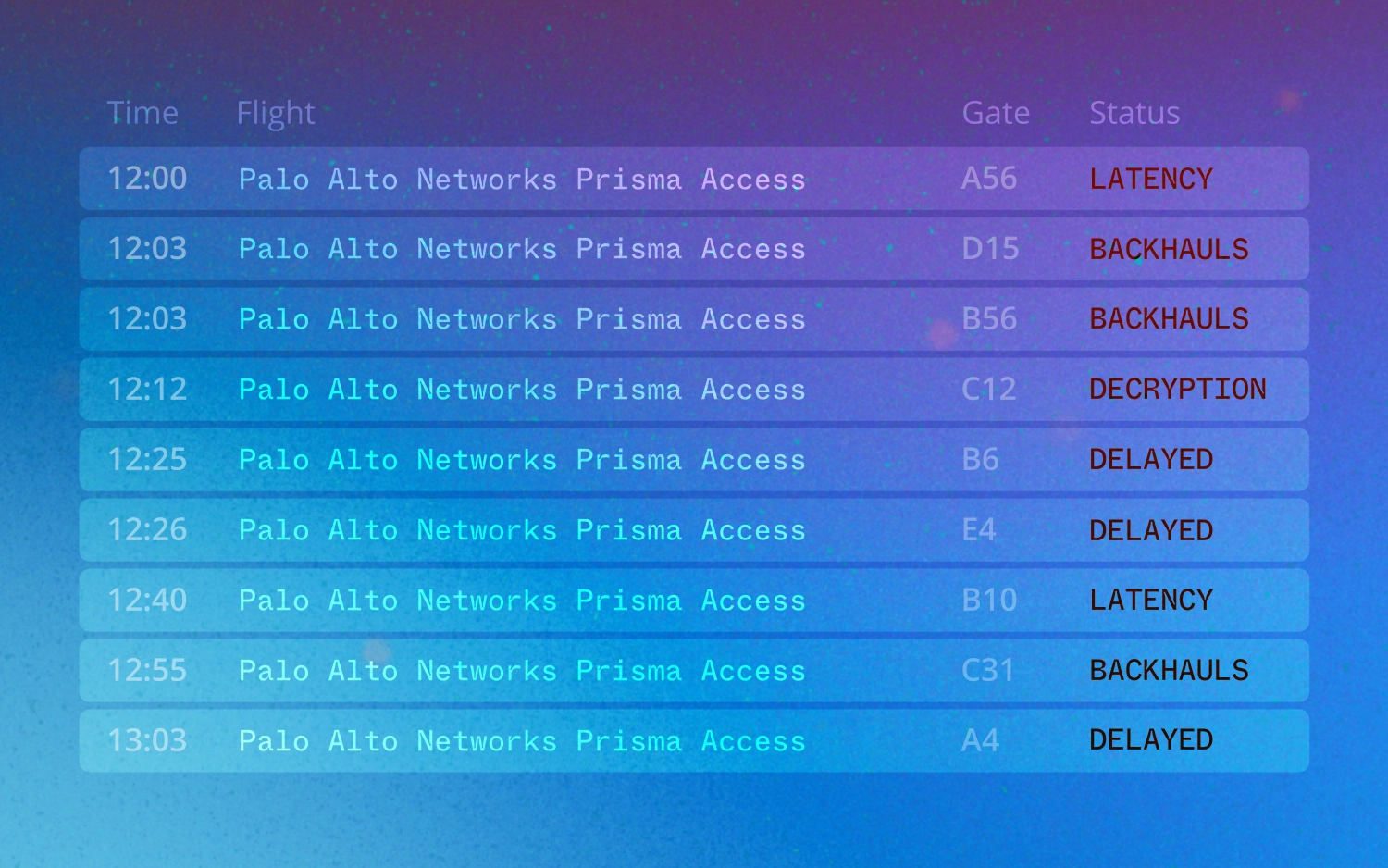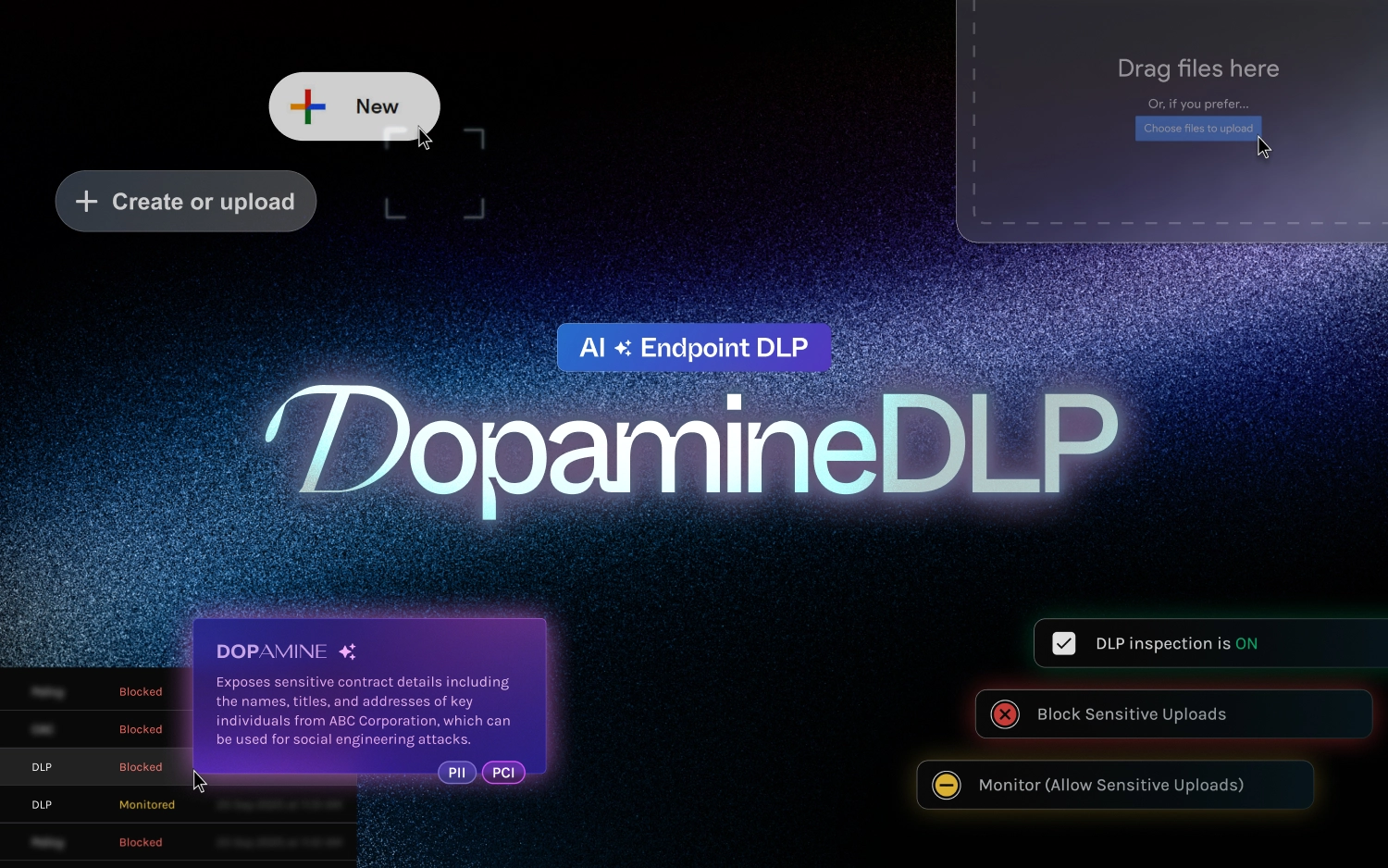Prisma Access Alternative: Endpoint-Native SWG

9-Point Performance & TCO Showdown for 2025 Buyers
TL; DR: If you’re wrestling with Prisma Access license tiers, global latency ceilings, and a six-figure service quote, an endpoint-native Secure Web Gateway (SWG) like dope.security lets you skip the stopover, cut latency by 4x, and reclaim both OpEx and CapEx.
Quick Scorecard
*Pricing per itprice.com. For dope.security pricing reflects average 10k licenses, but may vary by customer
1. Architectural DNA: Tunnel vs Fly-Direct
Prisma Access inherits a cloud-proxy design. Endpoints GRE/IP-sec traffic to the nearest Palo Alto POP, which then forwards out to the internet. Great for control, rough on UX when the POP is > 80 ms away.
With dope.security the SWG lives in the endpoint and performs inspection locally, then lets the packet “fly direct” to its destination—no mid-flight detour, no single choke-point. That removal of the stopover is the root of the performance and security improvement customers feel.
2. Latency & User Experience
- Default thresholds: Palo Alto’s own docs consider > 150 ms unacceptable for real-time apps
- Real-world effect: Network integrator BlueAlly notes that with cloud-GW tunnelling, “typing and having one round-trip per keystroke can be a painful, laborious process.”
- Endpoint numbers: Our recent telemetry study (171 k HTTPS requests across 42 countries) shows a median 38 ms RTT when inspection is on-device—roughly 4x faster than typical cloud-proxy round-trips.
3. Reliability & Outages
Cloud POPs add extra moving parts (TLS gateways, SD-WAN fabric, PGW controllers). Any incident, planned or otherwise, black-holes traffic. Status trackers list monthly Prisma maintenance windows and warnings.
Endpoint enforcement like with dope.security operates with near-zero external dependencies; if the internet route is up, security is up. And if for some reason the dope.cloud is down or unreachable, policy is still enforced thanks to the caching of policies on the device with the Fly Direct model.
4. Deployment & Day-2 Ops
Forrester’s TEI notes ~$248k in install labour and another $63k in annual “care-and-feeding” for Prisma SASE. Fly-Direct ships as a silent MSI/PKG and auto-updates are regularly pushed—one Intune push and you’re done. Policy changes take effect on-device in < 10 second, no Panorama queues or hourly polling.
5. SSL/TLS Decryption & Privacy
Prisma Access terminates TLS in the cloud, mandating central key stores and potential GDPR headaches. Dope.security decrypts locally, stores no private keys centrally, and can honor user-side client certificates.
6. AI & Automation
Palo Alto markets ZTNA policies and GenAI controls, but many require higher license bundles. dope.security leverages LLMs as part of our CASB Neural to scan, classify and remediate access to sensitive data. This is all included in your subscription, no additional tiers or add ons required.
7. Cost & Licensing Complexity
- List prices: Tier-A user is $150, Tier-F $60 for 1-year Prisma Access subscription
- Gartner verdict: “Clients describe Prisma Access pricing as complex, expensive, and sometimes difficult to interpret.”
- Composite TCO: Forrester pegs three-year spend at $8.3M NPV for 50 k users .
Fly-Direct runs a single flat license that includes SWG, CASB, and DLP—no surprise add-ons.
8. Scalability & Edge-Case Apps
Cloud POPs throttle throughput per tunnel (often 1 Gbps soft cap). Endpoint inspection scales horizontally with every new laptop and supports HTTP/2 natively.
9. ROI & Payback Window
Blend license savings (> 80%) with regained staff hours and bandwidth; most Fly-Direct pilots pay for themselves in < 6 months.
Ready to see Fly-Direct in action? Book a 15-min demo with dope.security.











